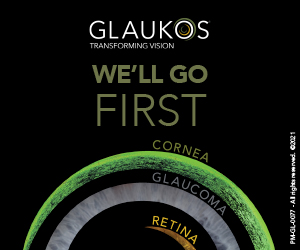Teleoptometry, teleophthalmology: a new era of eyecare
Technological advances touch every part of our existence. They’re with us from the moment our smartwatches wake us with a morning briefing, containing the weather forecast and our list of the day’s activities, to the evening where they help us wind down with voice-activated light-dimming and soothing music.
It’s no surprise then, that the future of optometry includes a heavy focus on the uptake of rapidly advancing technology, where we appear to be facing a case of ‘keep up or get left behind’. The advent of teleoptometry and teleophthalmology are critical; not only do they bridge the accessibility gap between patients and practitioners, they also address critical issues such as improving efficiency and costs and the evolving needs of our optometry workforce.
Teleoptometry’s different flavours
A useful starting point is to understand and differentiate between the various forms of teleoptometry currently available. Teleoptometry focuses on the direct interaction between optometrists and their patients and is usually conducted via video conferencing or other remote communication tools. Teleophthalmology, on the other hand, refers to the collaboration between optometrists and ophthalmologists (and sometimes patients) via digital platforms, enabling remote consultation, diagnosis and treatment.
Mike Yapp, head of clinical operations at Australia’s Centre for Eye Health, said his team’s experience with teleophthalmology has been of the asynchronous variety, where ophthalmologists log onto their network to review reports and images requested by optometrists. “This model has been particularly effective in managing conditions like glaucoma, macular degeneration and retinal vascular diseases, where timely review and intervention are crucial,” he said.

Mike Yapp
On the teleoptometry side, commercial entities such as Specsavers have ongoing remote optometry programmes in Australia, albeit at the pilot stage. This involves the patient attending a physical store with a technician present, while the optometrist dials in from another location. The technician conducts preliminary testing via OCT, tonometer and autorefractor, before asking basic triage questions and passing the patient and their results to the remote optometrist.
The remote optometrist can interact directly with the patient via a video livestream, explained Dr Ben Ashby, Specsavers ANZ’s director of optometry. “The clinical technician acts as the ‘arms’ of the optometrist in the testing room, moving equipment such as the phoropter and slit lamp into place so the optometrist can view the patient’s pre-test results and imagery, as well as review and analyse slit-lamp assessments via video. The optometrist also has remote control of the phoropter to conduct the refractive exam as if they were in the room.”

Dr Ben Ashby
The position in ANZ today
Remote health services gained traction during the Covid-19 pandemic, when face-to-face consultations were severely restricted. However, as the world transitioned out of the pandemic, teleoptometry and teleophthalmology have proven to be more than an effective temporary solution. “Supported by the growing acceptance and confidence of both patients and practitioners in its effectiveness, telehealth has moved from a niche offering to something that’s more mainstream and widely accepted as a part of most modern health markets,” said Dr Ashby, noting the positive feedback he’s received from more than 400 Australian patients and practitioners during Specsavers’ pilot projects in the regional locations of Victoria, Tasmania and New South Wales.
“Sadly, for care providers and patients in New Zealand, the country’s regulatory framework has not kept pace,” he said.
Although the Optometrists and Dispensing Opticians Board (ODOB) of New Zealand has developed telehealth standards, teleoptometry and teleophthamology are not currently approved due to optometrists having a restricted scope of practice. For this reason, ODOB deputy chair Annette Morgan said she feels telehealth is easier to develop in other professions. However, the ODOB has been considering telehealth for several years, she said, and therefore has a ‘seat at the table’ at the NZ telehealth forum to oversee how the technology and attitudes are advancing. “The ODOB must consider patient safety as paramount. We need to regulate in a right-touch manner. We accept patients need timely care, but we need to assure ourselves that the mode of delivery is safe. Present-day telehealth cannot offer that guarantee.”

Annette Morgan
There are limitations in Australia too, with the remote optometry model offered commercially not yet funded under its Medicare Benefits Schedule, which could pose a financial barrier to wider adoption for many patients. It’s something Optometry Australia (OA) has been lobbying the federal government for, most recently with its 2024-25 federal pre-budget submission. In it, OA advocates for the implementation of new item numbers for teleoptometry and asynchronous teleophthalmology, where optometrists and ophthalmologists can collaborate without the patient physically present.
Bridging health access gaps
With a rising demand for eyecare due to an ageing population and an increasing prevalence of eye health conditions throughout Australia and New Zealand, coupled with a forecasted shortfall in optometrists over the next 20 years, Dr Ashby said adopting a remote optometry model can help ensure patients access regular eyecare, no matter where they live. “With 90% of vision loss being preventable if detected early, attending a regular eye check could be the difference between halting a condition in its tracks or suffering vision loss.”
Based on his pandemic experience of holding monthly teleophthalmology clinics from Karratha and Port Hedland hospitals in the remote Pilbara region in Western Australia, Alex Craig, director of Karratha Eyecare, agreed. “It’s had a profound effect on the speed of patients being triaged and how efficient the system is. We can manage glaucoma and macular degeneration, we can get opinions on the retina and even acute anterior conditions as we’re able to share live images.” Other advantages include consenting and biometry for cataract surgery, plus consenting for pterygium surgery, since the surgeon can see the images on the day and hold a three-way discussion between themselves, the patient and primary care personnel. Craig, who’s continued with his monthly teleophthalmology clinics in conjunction with Lions Outback Vision, said he’s also had positive feedback from patients, who’ve told him they felt heard and invested in by all the parties involved.

Alex Craig
The Specsavers’ patient experience mirrors Craig’s, with most saying they had the same level of service and care as in their last traditional eye test, said Dr Ashby. In fact, some patients commented they felt an “even better experience of care”, he said, given that there were two people involved in their exam.
Remote possibilities
As teleoptometry and teleophthalmology continue to evolve, they hold the potential to reshape the landscape of eyecare. One area that holds great promise, according to Craig, is optometrist-to-optometrist teleoptometry. “In cases where we have optometrists who are highly trained in one area – for example glaucoma or AMD – we could develop a model of care where we can refer intra-professionally via teleoptometry.”
The ability to have a second and highly experienced opinion on a complex case, without the need to elevate it to tertiary care, is an exceedingly valuable outcome, he said. “It’s exciting to think of the possibilities of allowing optometrists to complete fellowships in areas of interest, ones that allow them to occupy a space in the referral pathway that improves accessibility to eyecare and reduces public hospital waitlists.”
The Centre for Eye Health recently launched a telehealth service based on this peer-to-peer tenet, said Yapp, giving Australian optometrists access to diagnostic and management support to explore cases of chronic retinal and optic nerve disease, with a focus on imaging interpretation. The service builds on 15 years of chronic posterior eye disease diagnosis and management in conjunction with Prince of Wales Hospital ophthalmologists, he explained. “Relevant patient images and clinical information are uploaded ahead of the appointment time and screen-sharing is used during the consultation to facilitate discussion and learning.” Interestingly, each 15-minute consultation can be also considered interactive education, for CPD purposes, he said.
There is so much potential for teleoptometry, said Dr Ashby, including helping future-proof the industry. “Specsavers has seen first-hand the changing demands of a modern optometry workforce looking increasingly for flexibility and urban living. While traditional models of eyecare are unable to deliver this flexibility, remote eyecare can. This is particularly important given the feminisation of the optometry workforce. Creating new models of delivering care creates opportunities for women to stay in the workforce in a way that suits their lives where they may have previously left.” The model also creates opportunities for employment, training and upskilling within local communities, he said, with three to four additional roles – such as optical assistants, dispensers, frame stylists and clinical technicians – needed within a practice to support each remote optometrist.
Given the rapid march of technological advances, especially in the AI space, it’s easy for a little fear to sneak into what the future looks like for optometrists and their practices. But Dr Ashby feels in-person consultations will forever remain an essential component of optometry care, while remaining hopeful that “a hybrid model that combines traditional and remote/teleoptometry services offers a promising path forward for enhancing patient access and care quality across Australia and New Zealand.”

Renee Lunder is an Australian freelance journalist, proud specs wearer and regular contributor to NZ Optics.





















